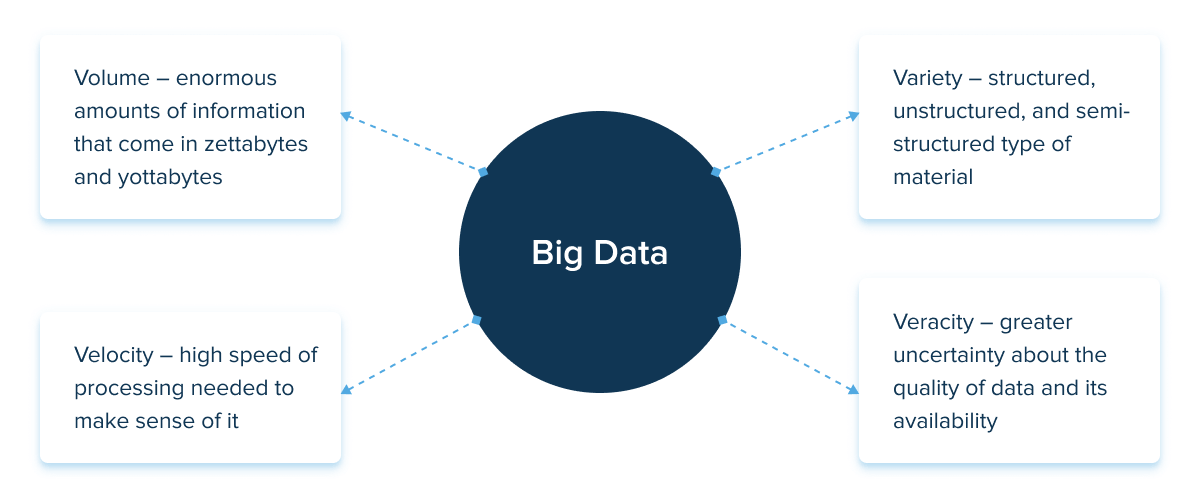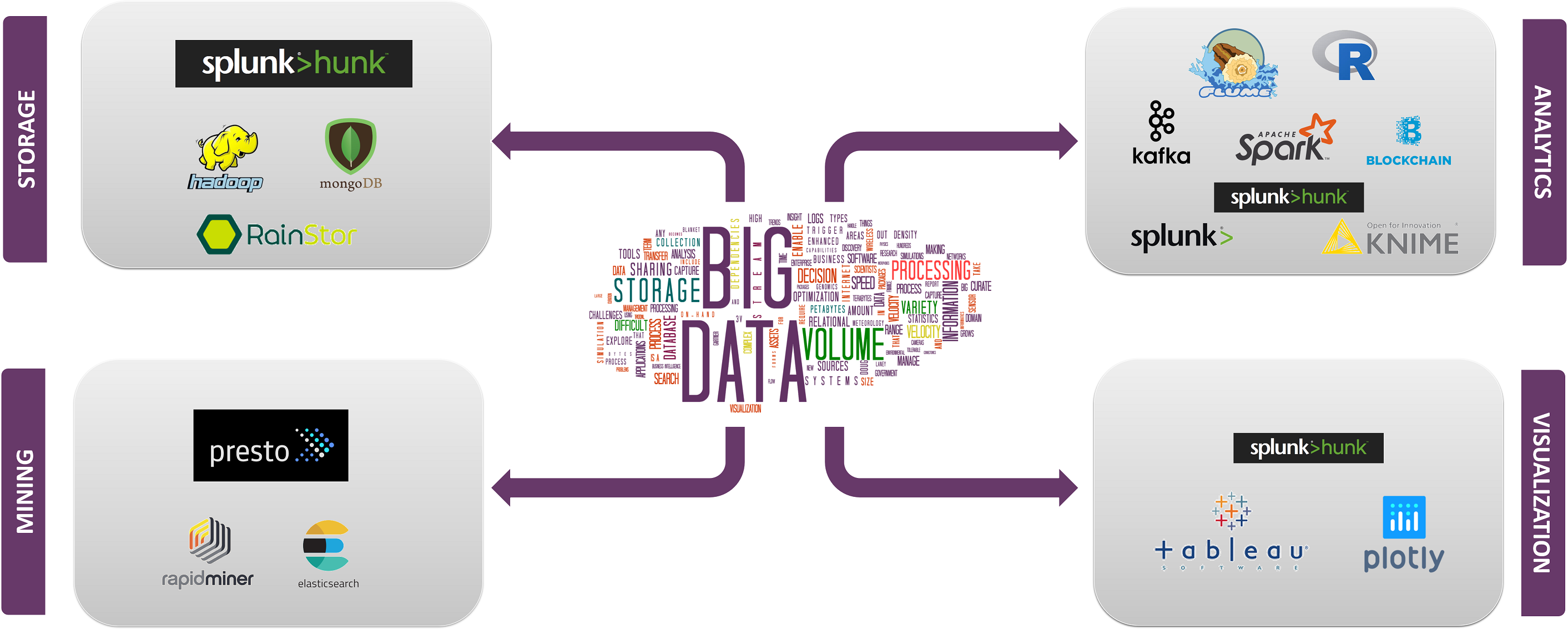4 Types of Big Data Technologies: Unveiling Key Trends
- Update Time : Sunday, December 15, 2024

4 Types of Big Data Technologies: Big data shapes our world in countless ways. It helps businesses make smarter decisions.
Big data technologies are the backbone of modern data analysis. They turn vast, complex datasets into valuable insights. These technologies come in various forms, each with unique strengths. This post delves into four key types of big data technologies. We will explore their roles and how they empower data-driven decision-making.
No matter your field, understanding these technologies is crucial. They can help you grasp customer behavior, improve operations, and innovate. The data landscape is vast and can seem daunting. Yet, with the right knowledge, its potential is within your reach. Join us as we simplify the complex world of big data technologies. Let’s make it accessible for everyone, regardless of their technical expertise.
Introduction To Big Data Technologies
Big Data technologies have transformed how we handle vast amounts of information. They enable businesses to process and analyze data sets too large for traditional databases. Let’s explore the core types and their impact on business.
The Explosion Of Data
Data grows daily. From social media to IoT devices, the digital universe expands. This surge demands robust Big Data solutions. They store, manage, and analyze this ever-growing data pool.
The Role Of Big Data In Modern Business
Big Data drives decision-making. Companies leverage analytics for insights. This leads to smarter strategies, improved customer experiences, and better operational efficiency.
Batch Processing Systems
Big Data changes how we understand the world. Among its tools, Batch Processing Systems stand out. They manage large data chunks at once. This approach differs from processing data piece by piece. Let’s explore this system, focusing on a popular framework and its benefits.
Hadoop Ecosystem
The Hadoop Ecosystem is a key player in Batch Processing. It handles vast amounts of data. Hadoop breaks data into pieces. These pieces spread across many computers. This method speeds up data processing. It’s like many hands making light work. Hadoop includes tools for different tasks. For storing data, there’s HDFS. For processing, there’s MapReduce. Together, they make data handling efficient.
Advantages Of Batch Processing
Batch Processing saves time. It processes big data sets during off-hours. This means systems are free for other tasks during the day. It also reduces errors. The system checks data as one large batch. This makes it easier to spot and fix mistakes. Lastly, it’s cost-effective. It uses resources wisely, keeping costs down.
Real-time Processing Frameworks
Big Data thrives on speed and efficiency. Real-Time Processing Frameworks are crucial for businesses needing instant data analysis. These frameworks process large streams of data quickly. They provide insights as events happen, enhancing decision-making.
Stream Processing Explained
Stream Processing is a big data technology. It handles continuous data flow. This tech processes data on the fly, directly as it’s generated.
Use Cases For Real-time Analytics
- Fraud Detection: Banks use real-time processing to spot suspicious transactions instantly.
- Health Monitoring: Wearables track health metrics and alert users and doctors immediately.
- E-commerce Personalization: Online stores show live recommendations, boosting sales.
- Supply Chain Management: Companies track goods and manage inventory in real time.

Credit: www.coursera.org
Big Data Storage Solutions
As the world drowns in data, storing it becomes a challenge. Big Data storage solutions tackle this issue. They make sense of vast, complex data sets. Let’s explore key technologies that store Big Data efficiently.
Databases At Scale
Big Data needs large, robust databases. Traditional databases can’t handle this scale. Enter scalable databases. They grow with data needs. They are fast and reliable for Big Data demands.
Object Storage And Data Lakes
Object storage holds data in a flat system. It’s different from traditional file storage. It can store massive amounts of unstructured data. Data lakes use this method. They keep raw data until it’s needed.
Data Analytics And Visualization Tools
Data Analytics and Visualization Tools turn raw data into insights. They make complex information easy to understand. These tools help businesses make better decisions. Let’s look at two key types.
Business Intelligence (bi) Platforms
BI Platforms are essential for data analysis. They collect and process large amounts of information. This helps companies understand their business better. Key features include:
- Dashboard creation
- Report generation
- Data mining
These platforms support better decision-making. They present data in clear ways. Users do not need deep technical knowledge to use them.
Interactive Data Visualization
Interactive Data Visualization tools make data more engaging. They allow users to explore data through visuals. This includes:
- Charts
- Graphs
- Maps
These tools make complex data simple. Users can find patterns and insights easily. This supports quick decision-making.

Credit: indatalabs.com
Trends Shaping Big Data Technologies
Big Data technologies are evolving rapidly, with new trends constantly emerging. These trends are reshaping how we collect, manage, and analyze massive volumes of data. In this ever-changing landscape, businesses must stay informed about the latest advancements. Two significant trends playing pivotal roles in the evolution of Big Data technologies are Cloud Computing Integration and Machine Learning and AI.
Cloud Computing Integration
Cloud computing offers flexible resources for Big Data analytics. It enables organizations to store and process large datasets without heavy investment in infrastructure. This trend leads to cost savings and improved scalability. Key benefits include:
- Elasticity: Scale resources up or down as needed.
- Collaboration: Share data easily across global teams.
- Accessibility: Access data anytime, anywhere.
Integration with the cloud has become essential for Big Data solutions. Many businesses are migrating their data platforms to cloud services like AWS, Google Cloud, and Azure.
Machine Learning And Ai
Machine Learning (ML) and Artificial Intelligence (AI) are transforming Big Data analysis. These technologies enable predictive analytics and intelligent decision-making. They help in identifying patterns and insights from large datasets. Key applications include:
- Customer behavior prediction.
- Fraud detection and prevention.
- Personalized recommendations.
ML and AI technologies are increasingly integrated into Big Data platforms. They offer advanced analytics capabilities that are critical for competitive advantage.
Challenges In Big Data Implementation
Big Data brings big benefits. But it’s not easy. Let’s talk about why. We face two big hurdles: keeping data safe and finding the right people to work with it.
Data Security And Privacy Concerns
Keeping data safe is a top worry. Why? Because data leaks hurt. They hurt businesses and people. We use many tools to stop this. But the bad guys keep getting smarter. This means we must always be on guard.
- Encryption helps keep data secret.
- Access control makes sure only the right people can see data.
- Audits check everything is okay.
Skill Gap And Resource Allocation
Finding the right people is hard. Not everyone knows how to work with Big Data. We need experts. But there aren’t enough of them. This means training is key. We also need to use our people well. This makes sure projects succeed.
- Train your team.
- Use tools that help with Big Data.
- Plan projects carefully.
Both these challenges need attention. We must keep data safe. We also need the right people. Solving these problems helps us use Big Data well.

Credit: www.edureka.co
Future Outlook Of Big Data Technologies
The landscape of Big Data technologies is evolving rapidly. With exponential data growth, new technologies emerge to harness its power. The future of Big Data lies in technologies that can not only handle the volume but also provide insights and real-time processing. Let’s explore how Predictive Analytics and the IoT with Edge Computing are shaping this future.
Predictive Analytics
Predictive Analytics use historical data to forecast future events. It helps businesses anticipate needs and act proactively. In the coming years, it will grow smarter with machine learning. This means better decision-making in sectors like healthcare, finance, and retail.
- Improved customer experience through personalized services
- Reduced risks with advanced fraud detection systems
- Optimized operations by forecasting inventory and maintenance needs
The Impact Of Iot And Edge Computing
The Internet of Things (IoT) connects devices worldwide, generating huge data volumes. Edge Computing processes this data closer to its source. This duo brings faster insights and reduces data transfer costs. By 2025, billions of devices will connect, pushing this tech to new heights.
| Technology | Benefits |
|---|---|
| IoT | Connects devices, collects data |
| Edge Computing | Processes data locally, speeds up response time |
This integration supports smart cities, autonomous vehicles, and smart manufacturing. It leads to:
- Efficient resource management
- Enhanced public safety with real-time monitoring
- Seamless automation in various industries
Frequently Asked Questions
What Is Big Data Technology?
Big Data technology refers to tools, processes, and procedures allowing an organization to create, manipulate, and manage very large data sets and storage facilities. These technologies are crucial for analyzing, processing, and extracting valuable information from complex and voluminous data.
How Do Big Data Technologies Impact Businesses?
Big Data technologies enable businesses to gain more comprehensive insights, improve decision-making, and increase operational efficiency. By analyzing large amounts of data, companies can identify trends, improve customer experiences, and create competitive advantages.
What Are Examples Of Big Data Technologies?
Examples of Big Data technologies include Hadoop for distributed storage and processing, NoSQL databases for scalable storage, Apache Spark for big data processing, and data lakes for storing diverse data in its native format. These technologies support vast data operations and analytics.
Why Are Big Data Technologies Important?
Big Data technologies are important because they handle data at a scale and speed beyond traditional database capabilities. They allow for real-time analysis and insights, helping organizations make informed decisions, predict trends, and personalize customer experiences.
Conclusion
Navigating the world of big data can be daunting, yet it’s crucial for modern business success. This post outlined four key technologies that manage and make sense of vast information volumes. Each type serves a unique purpose, from storage to processing to analysis.
Businesses should consider these options to handle their data needs effectively. Embracing these technologies can lead to smarter decisions and improved outcomes. As data continues to grow, staying informed and adaptable is vital. Let these tools guide you through the big data landscape.


















Leave a Reply